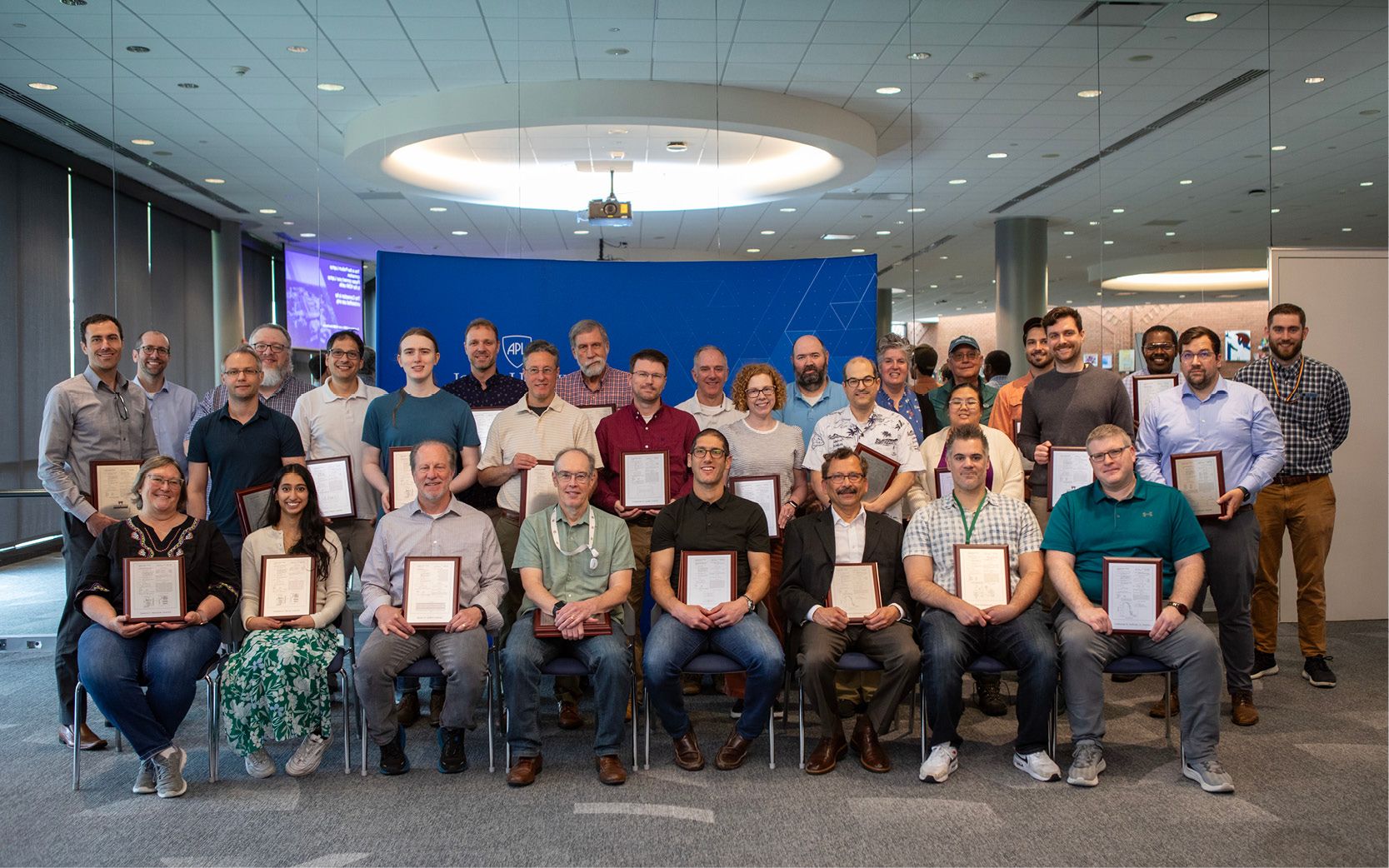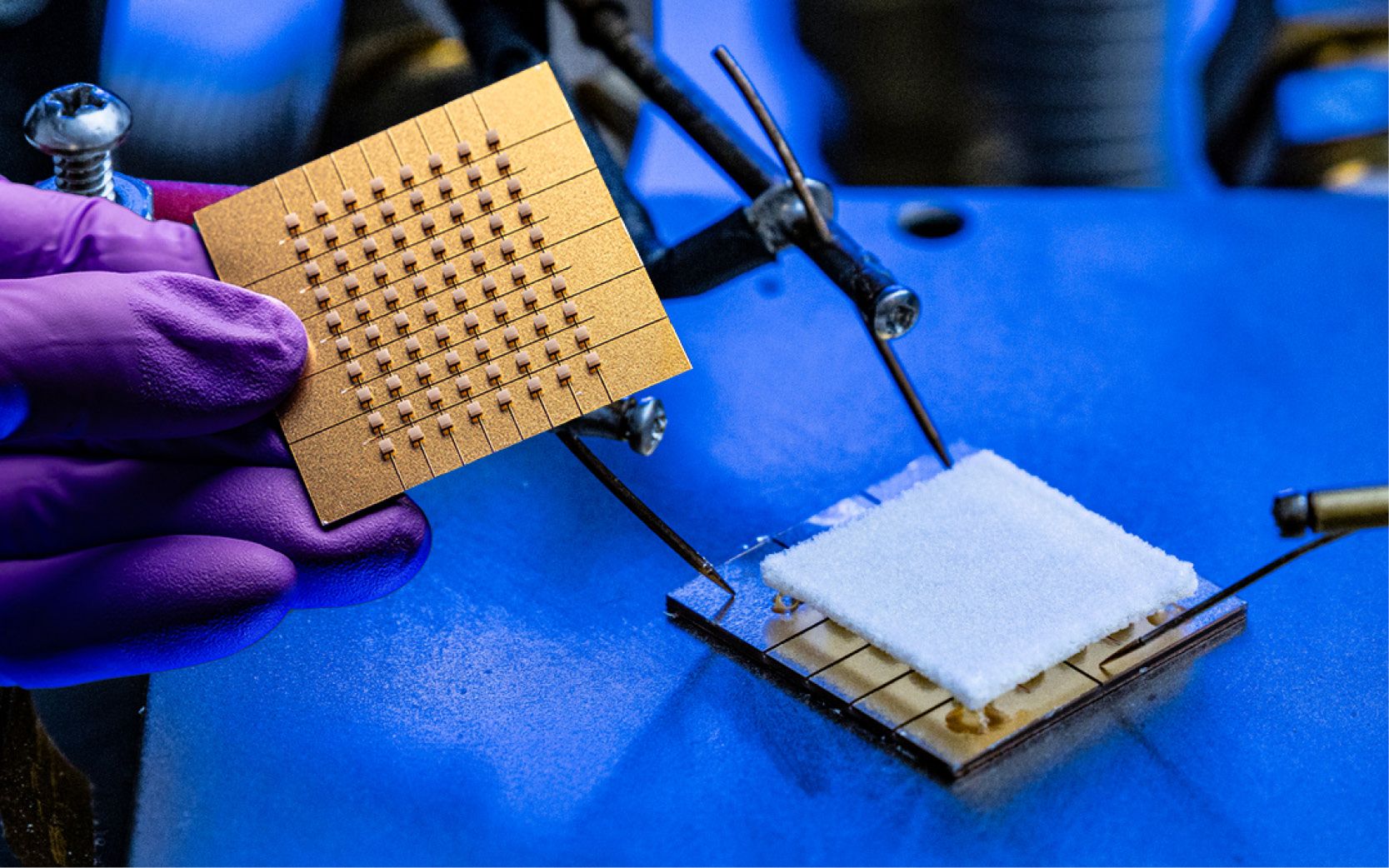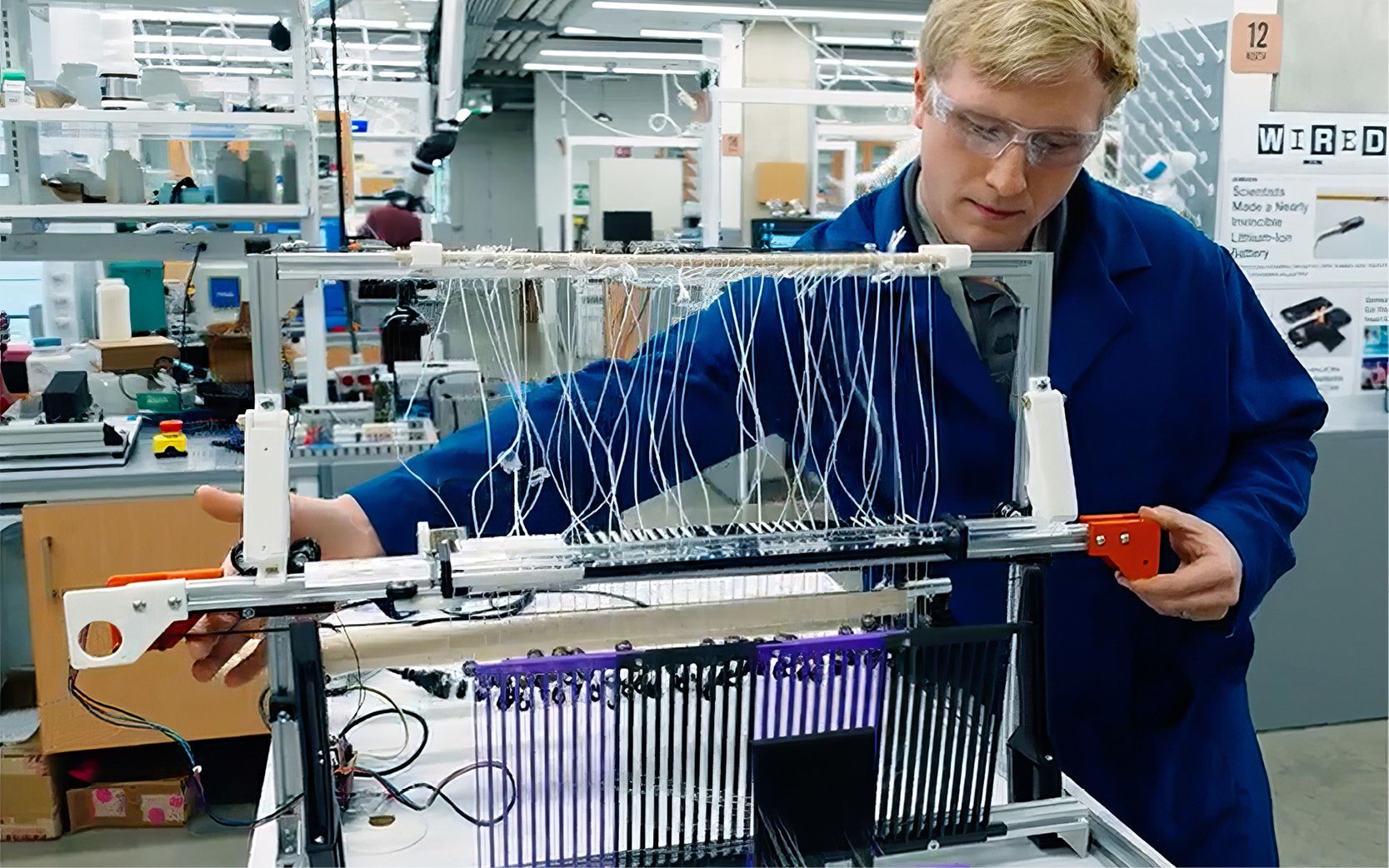APL’s technology transfer efforts drive a dynamic innovation ecosystem by responsibly transferring knowledge and technology with speed and transparency, fostering strategic partnerships to support research and development, and identifying global technological advances to accelerate the development of capabilities by APL. These initiatives ensure APL innovations reach their fullest potential, addressing the nation’s most complex national security, space exploration and global health challenges.
A Record-Breaking Year
In alignment with the Laboratory’s centennial vision, Tech Transfer bolsters staff members’ ability to implement ideas in a way that benefits society and improves lives around the world. APL asks staff members to file intellectual property (IP) disclosures as soon as the staff member has a definite idea of the complete and operative invention or, for copyrighted IP like software, once the idea has been written into a book, software code or other media. From there, the Tech Transfer office helps decide which IP the Laboratory wants to protect with patents. Patents are key examples of APL’s status as a leader in research and innovation — and a basis for forging new collaborations with sponsors and partners.
In 2024, the Laboratory marked a record-breaking year for IP with 564 IP disclosures submitted. Since APL began tracking this data in 1990, staff members have introduced more than 8,000 IP disclosures. But over the last five years, APLers have disclosed at an accelerated pace, averaging roughly 450 annual IP disclosures. That’s up from an annual average of 315 over the prior five years.
The growth in IP disclosures throughout 2024 underscores APL’s commitment to making substantial investments to turn novel ideas into tangible, innovative solutions. Once again named one of Fast Company’s Best Workplaces for Innovators in 2024, APL’s reputation for encouraging innovations and pushing boundaries continues to aid in attracting top talent. Once patents are in place, Tech Transfer pursues potential licensing partners for the Laboratory’s unique technologies using real-world use cases. In some instances, APL offers no-cost government purpose licenses to broaden the impact of APL’s innovations.

APL Tech Transfer hosts an annual event to celebrate Lab staff members who secured new patents in the previous fiscal year. In 2024, they honored 65 inventors for their fiscal year 2023 contributions to APL’s intellectual property portfolio and commitment to pioneering research.
Statistically Speaking — FY 2024 Data for Tech Transfer
IP assets disclosed
U.S. patents issued
U.S. patent applications filed*
Licensing and other agreements executed
Agreements and Collaborations
APL entered into 75 new licenses and other agreements. Notable 2024 Tech Transfer agreements include:
Revolutionizing Cooling and Energy: Advancements in Thermoelectric Technology
In 2024, APL made significant advancements in thin-film thermoelectric devices through strategic collaborations with commercial partners, opening doors for new licensing opportunities as well as for applying those advancements for sponsor needs. Partnering with a leading refrigerator manufacturer, APL tested and validated its innovative and patented nanoengineered materials. This research has the potential to ultimately transform refrigeration by replacing the traditional compressors with efficient, scalable and reliable solid-state cooling devices, moving away from traditional systems that rely on environmentally harmful refrigerants and energy-intensive processes.
Additionally, in collaboration with a major consumer electronics company, APL has pioneered the first practical demonstration of thermal energy harvesting — the process of capturing and converting waste heat into usable electrical energy — showcasing its potential for extending the battery life for wearable electronics. These achievements underscore APL’s leadership in thermoelectric innovations and its expanding influence on commercial applications for public good.

APL researchers partnered with a leading refrigeration manufacturer to test and validate improved efficiencies of their patented nanoengineered thin-film thermoelectric devices, seen here in a testing environment.
Advancing Battery Innovation Through Industry Partnerships
APL continues to drive advancements in novel battery technology, developing high-performance anode materials, fiber batteries and flexible electrolyte chemistries. The Laboratory is collaborating with industry leaders to evaluate its innovations, including an electrode material that could extend battery life in medical devices and a flexible battery for wearables. Licensing negotiations are also underway to scale up production of APL’s advanced electrode materials for commercial use.
Beyond consumer applications, APL is exploring the use of APL’s battery technologies in aerospace and space applications. APL is in discussions with a space habitat developer to assess how APL’s power fibers can integrate energy into fabric, reducing reliance on solar panels. Additionally, a battery producer is evaluating APL’s electrolyte materials for aerospace applications. These initiatives highlight APL’s commitment to transitioning breakthrough research into real-world solutions across multiple industries.

Current manufacturing and design methods have limited the scalability and performance of fiber batteries. To overcome this obstacle, APL researchers built customized pieces of equipment to make battery- and solar-powered fibers at scale. Richard Korneisel, a microelectronics and nanofabrication engineer, operates a custom-built mini loom to weave nylon and solar cell fibers into a small textile.
Advanced Manufacturing at Sea
APL is developing a suite of advanced manufacturing technologies that could be used for maritime applications to enable the U.S. Navy to maintain control of security and logistics for vital supply chains and to ensure domain dominance.
Advanced electronics manufacturing capabilities support critical operational needs, such as the ability to diagnose and repair malfunctioning electronics at sea. This alleviates downtime and the need for ships to return to port for repairs. APL has developed and integrated technologies, such as Integrated Subtractive Tooling, to enhance existing electronic additive manufacturing machines by automating complex circuit board repairs, thereby reducing reliance on manual work and ensuring greater precision and consistency. This upgrade makes the machine more effective in field settings where space is limited, such as military or remote operations, by integrating new brackets, milling components and system controls. Additionally, a user-friendly guide and template library for aerosol jet printing have been developed to help nonexperts easily set up and print circuits using preset patterns for common electronic components, improving reliability in advanced manufacturing.
Partnering to Strengthen Communications and Navigation in Cislunar Space

Cislunar space, which comprises the region between Earth’s geosynchronous orbit and the Moon, as well as the Earth-Moon Lagrange points, has attracted interest from military, civil space and industry organizations that see it as a key location for national security, scientific exploration, resource mining and manufacturing.
In November 2024, APL and Intuitive Machines, Inc., entered into a cooperation agreement to develop a secure and reliable communications and navigation infrastructure in cislunar space — the region between Earth’s geosynchronous orbit and an area around the Moon. This partnership aims to support national security, scientific exploration and commercial endeavors by enhancing capabilities in positioning, navigation, tracking and networking within this strategically important area. Intuitive Machines may adapt these advancements for commercial applications, contributing to the broader development of cislunar infrastructure.
Notable Collaboration — Disrupting the Process for Early Detection
In collaboration with experts at the Johns Hopkins School of Medicine and the University of Maryland, Baltimore County, APL researchers developed two pieces of technology that could be used to improve imaging for breast cancer screening. Tech Transfer executed a commercial option with Curing Women’s Cancer (CWC), an Arizona-based foundation, to perform a commercial feasibility study on incorporating APL-patented upstream data fusion (UDF) and convolutional neural network image restoration technology into an artificial intelligence (AI)-assisted, low-cost, portable ultrasound screening solution for breast cancer detection that can be implemented at the point of need.
Present-day mammography screening is expensive and requires significant medical infrastructure. This often creates barriers for early breast cancer detection in low-income and disadvantaged parts of the U.S. and around the world. Additionally, ultrasounds are often recommended for dense breast tissue but suffer from low specificity and can lead to unnecessary biopsies.
Incorporating APL’s UDF and image registration technologies into a portable ultrasound device could address these screening challenges by decreasing variation in individual interpretation of breast images. UDF leverages AI to combine multiple sources of data. Meanwhile, image registration provides the ability to map multiple views of the same object so that they align with one another. When UDF is combined with image registration technology, clinicians can find the location of a lesion more quickly, with more accuracy and with a higher likelihood of identifying malignant lesions.
Ultimately, an AI-assisted, portable ultrasound screening capability aims to lower costs, provide improved outcomes and democratize access to preventative care. If successful, this technology could substantially improve the current standard of early and preventive care for women.







